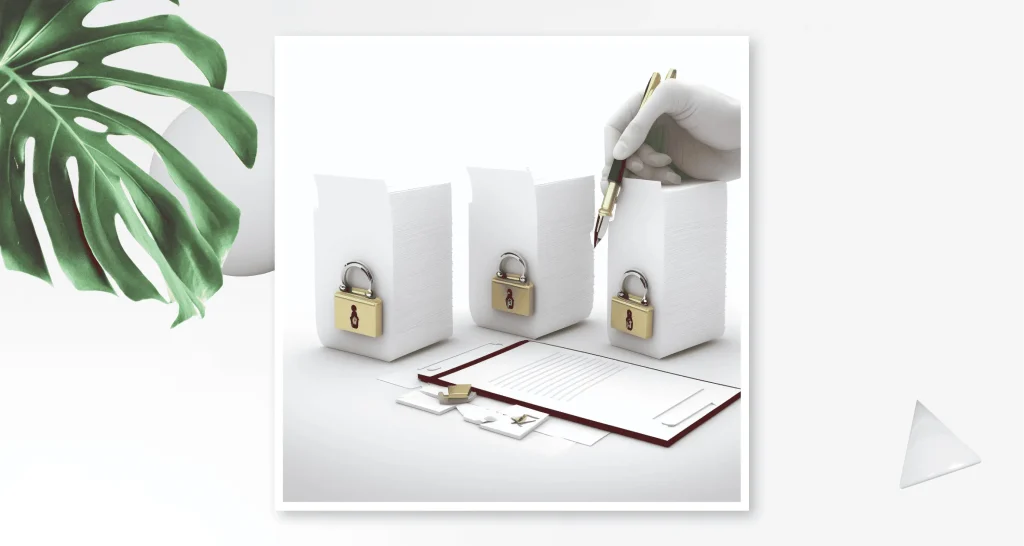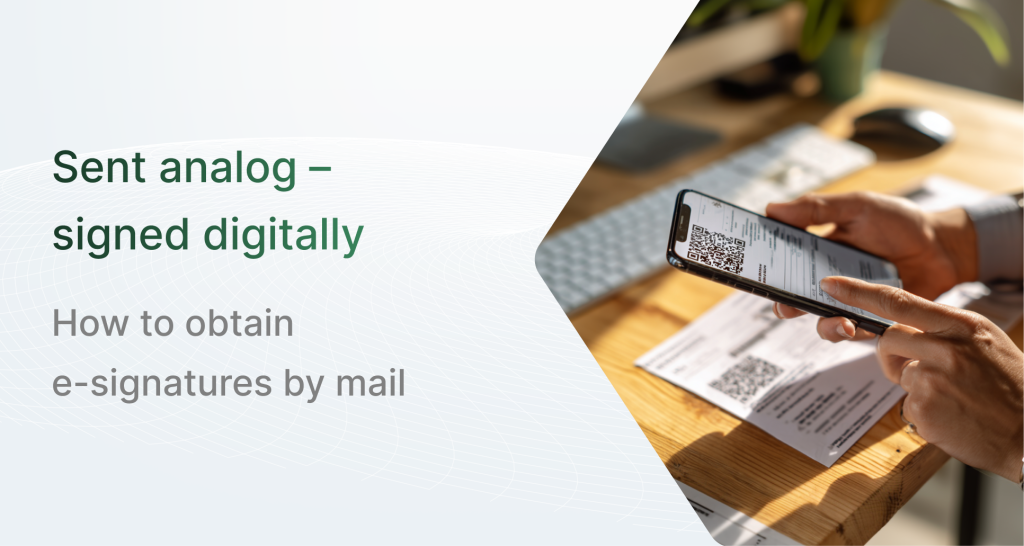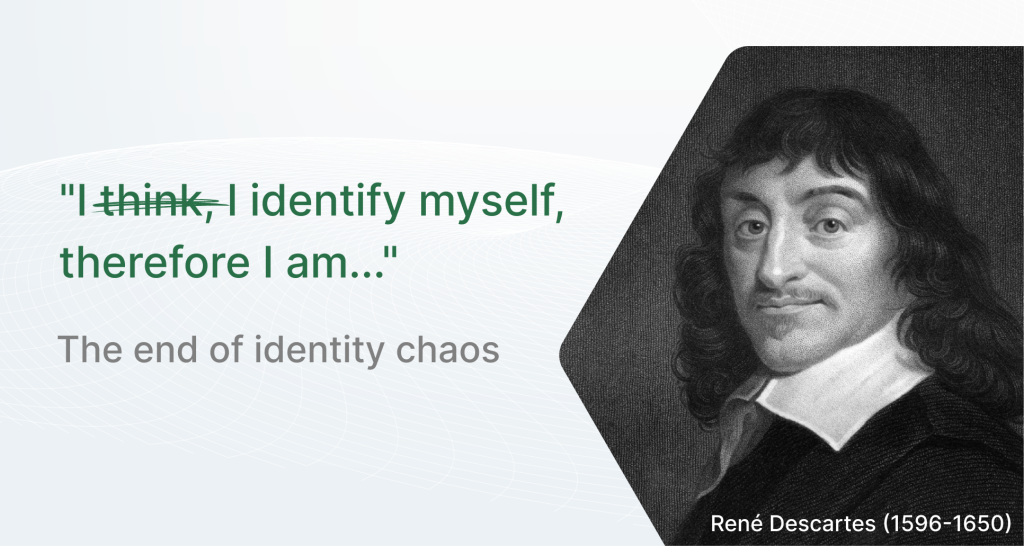Not all digital signatures are the same!
Almost all of us have dragged a photo of his/her signature onto a document and checked it off as digitally signed. This may have been sufficient for simple and informal documents, but this approach has one or two limits. Therefore, a distinction is made between three types of signatures and only the qualified signature is legally 100% equivalent to the handwritten signature. This requires a more complex technology (e.g. sproof sign) that can create an encrypted, verifiable signature in the background.
Depending on the use case and requirements, a specific signature standard must be chosen. The legal basis for this in the EU is the eIDAS Regulation, which sets out requirements for the individual forms. The three most important signature standards and their various properties are explained in this article.
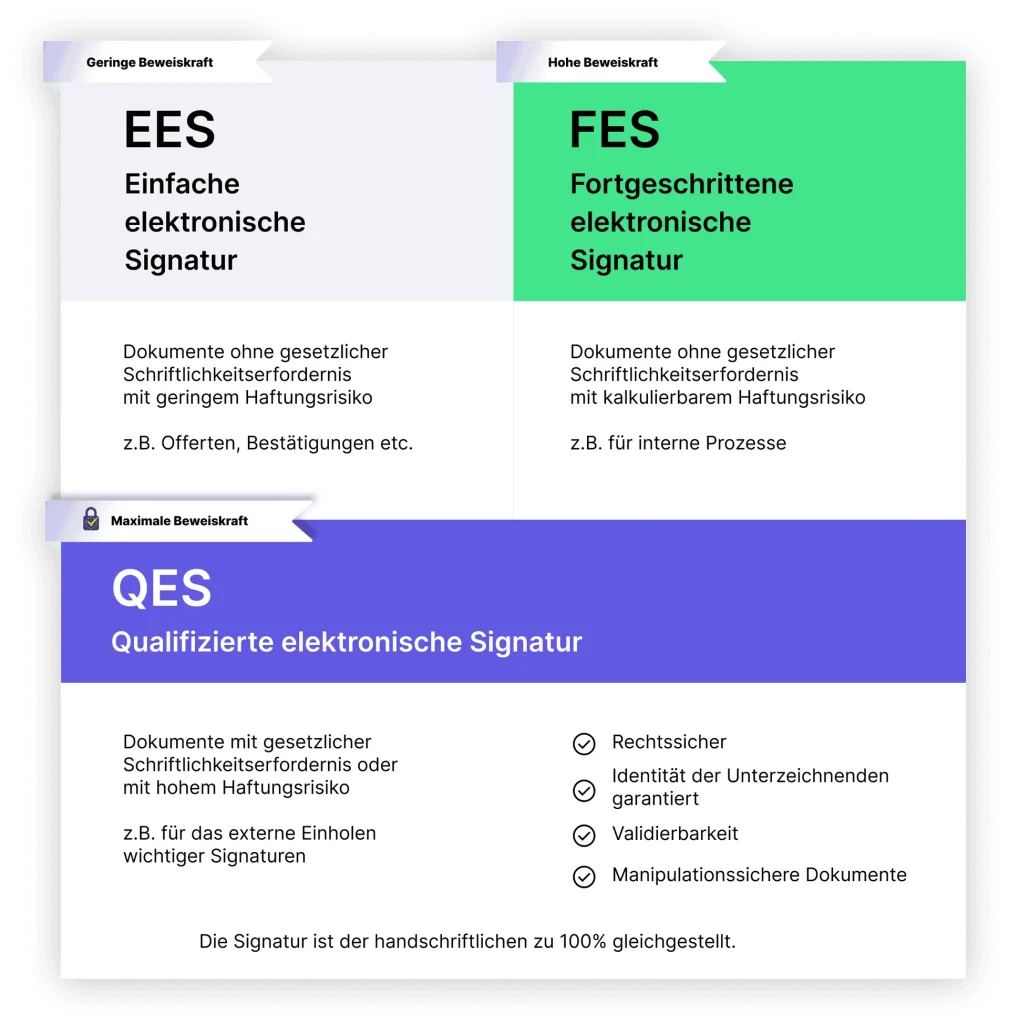
The QES – the digital equivalent of the handwritten signature
According to the eIDAS Regulation, a qualified electronic signature (QES) is legally equivalent to a handwritten signature 100% and meets the highest quality criteria. However, the signature must be carried out using a qualified signature creation device and 2-factor authentication. In Austria, for example, this is implemented with the mobile phone signature (ID Austria). The qualified digital signature must also include the name of the signatory.
In the case of contracts with a legal formal requirement (written requirement) and high demands on the evidential value and trust of all contracting parties, only the qualified signature should therefore be used. In addition, QES can maximize the evidentiary value of informal contracts and minimize risk.
The QES is sproof sign’s carefree signature specialty. We also meet the highest demands.
The FES – the flexible choice for documents without formal requirements
The advanced electronic signature (FES) offers the possibility of unique identification of the signer in addition to the simple digital signature. Identification can be carried out, for example, via the e-mail address, telephone number, etc., and identity verification is thus also possible afterwards.
Every signature made with sproof sign already achieves the high level of security guaranteed by the advanced digital signature. In our case, the signatory is additionally identified, e.g. with the help of the e-mail address. Thus, this type of digital signing already has sufficient evidential value for many use cases. The FES is mainly used for contracts without formal requirements, such as rental contracts or simple employment contracts.
The EES – for informal documents without liability risk
The simple electronic signature (EES) has no evidential value or can in no way replace a written signature, as it does not contain any possibility of identification and therefore cannot be clearly assigned to a person. It is therefore only suitable for informal contracts and informal documents. A common example of a simple signature is an uploaded photo or a scan of a signature placed on a document.
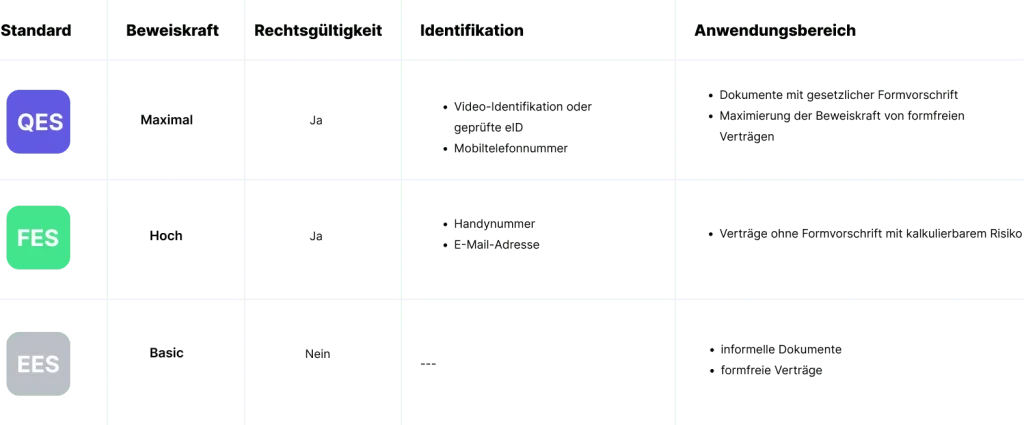
*The examples may vary depending on the country and internal guidelines and should therefore only serve as an aid to understanding! Consult legal advice or our sales department for your specific case.

